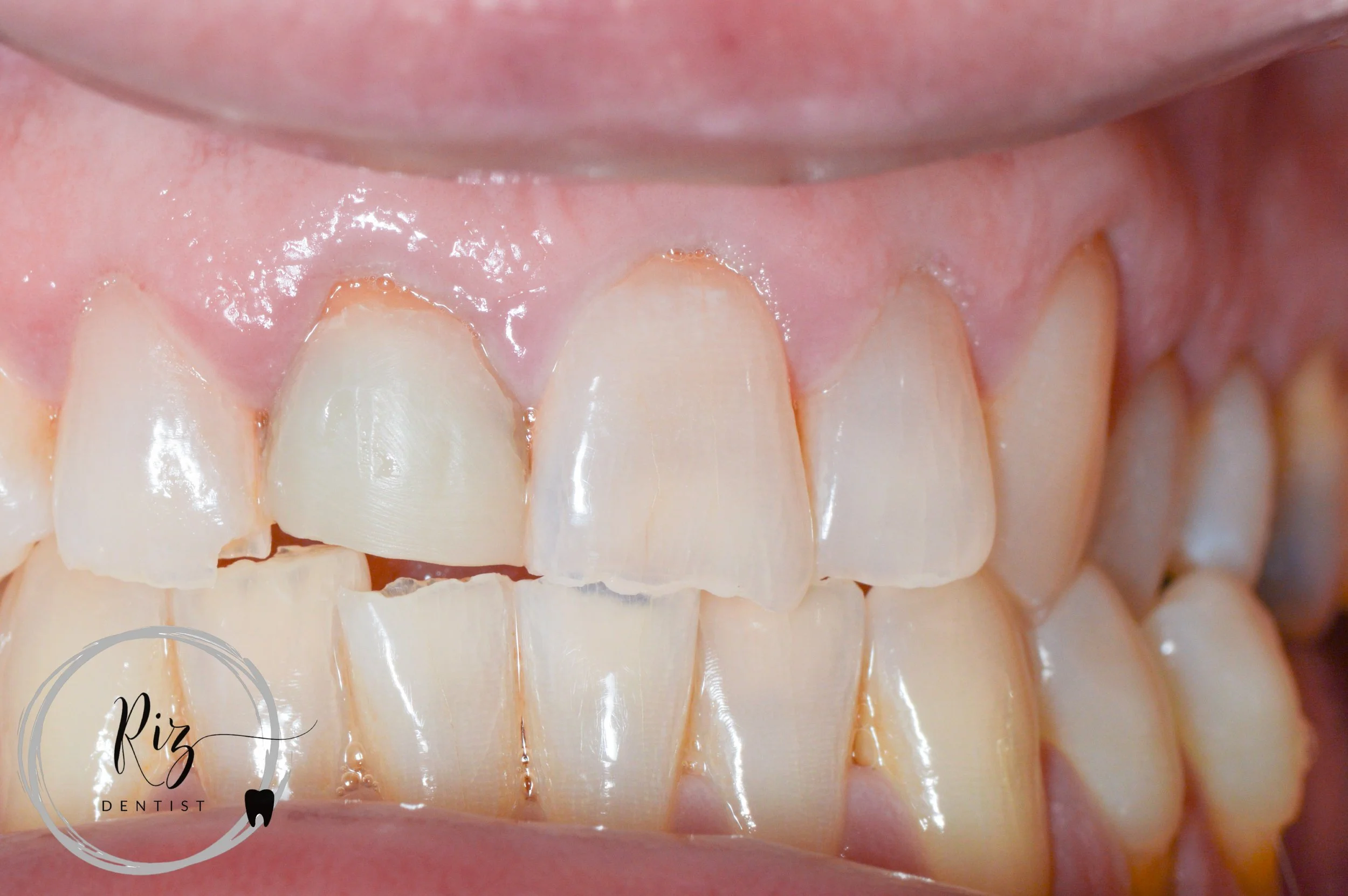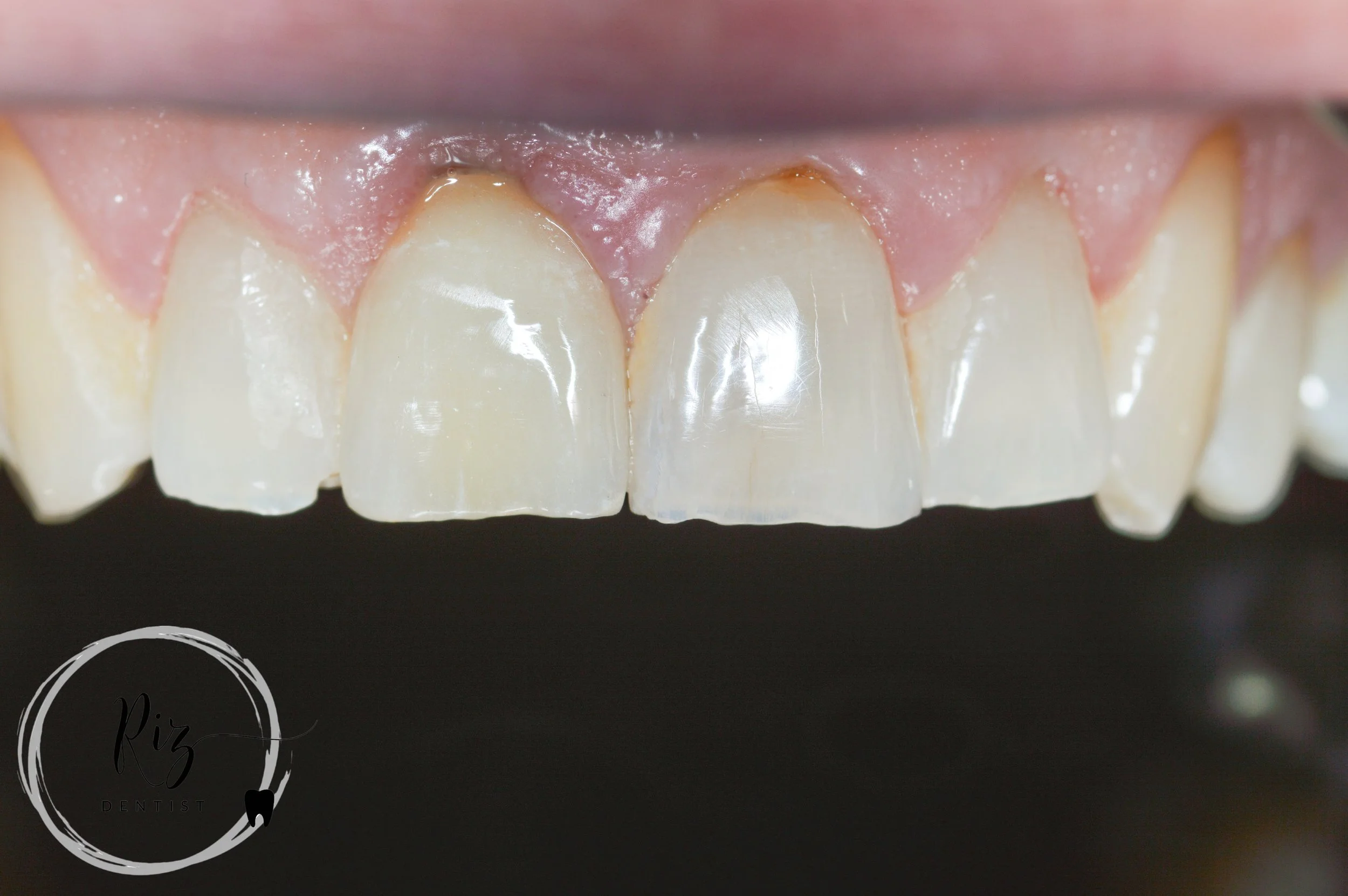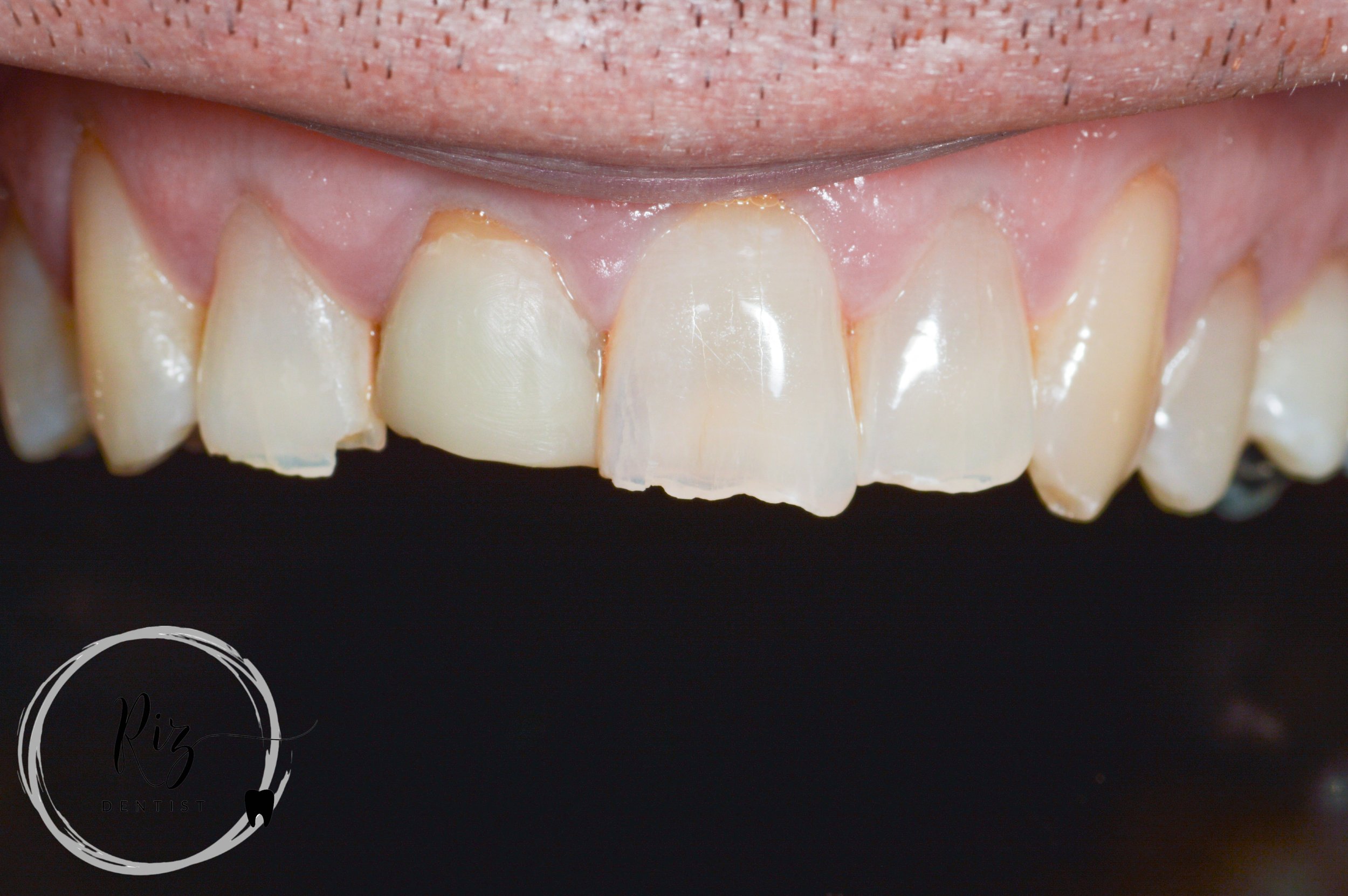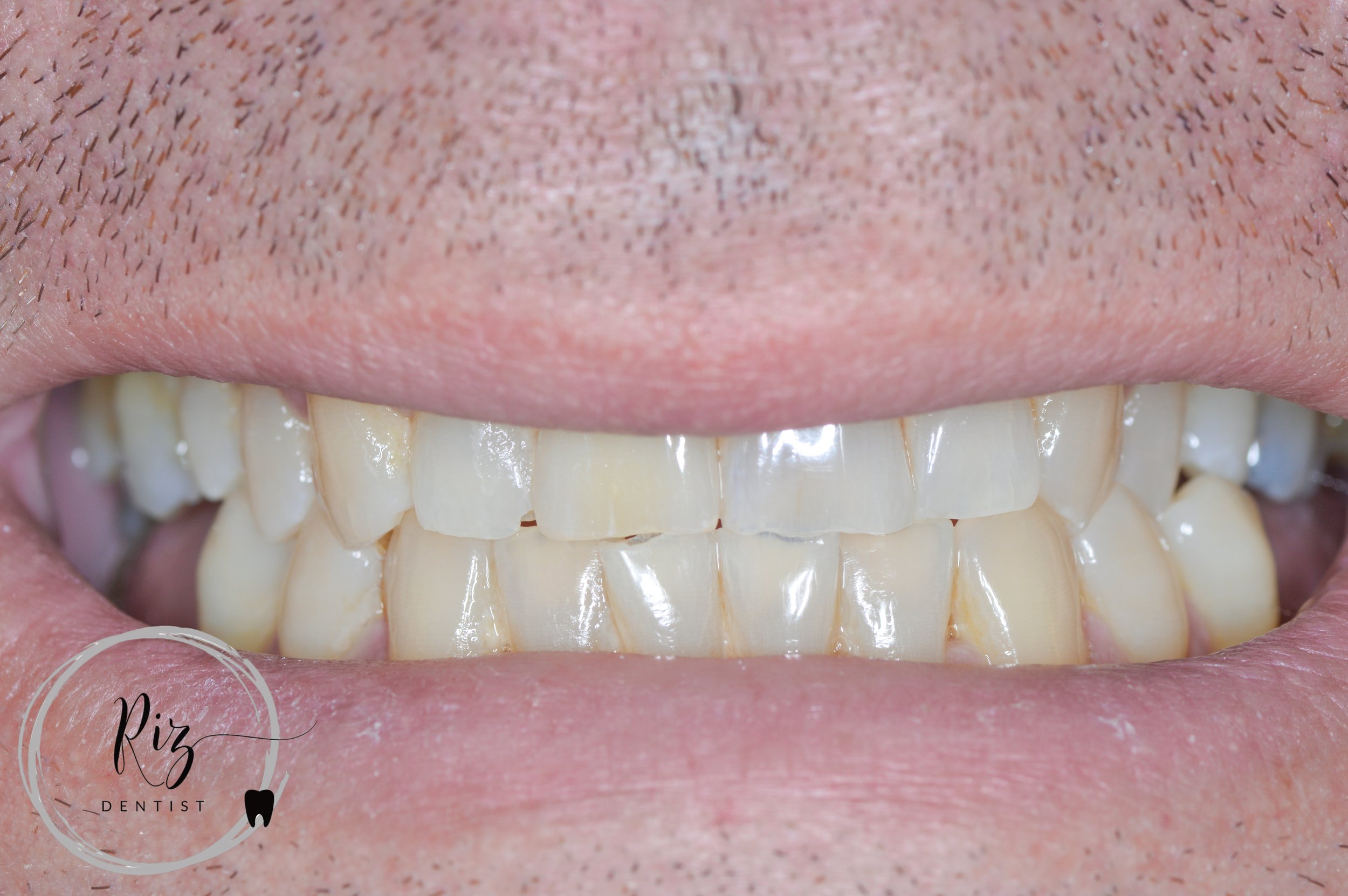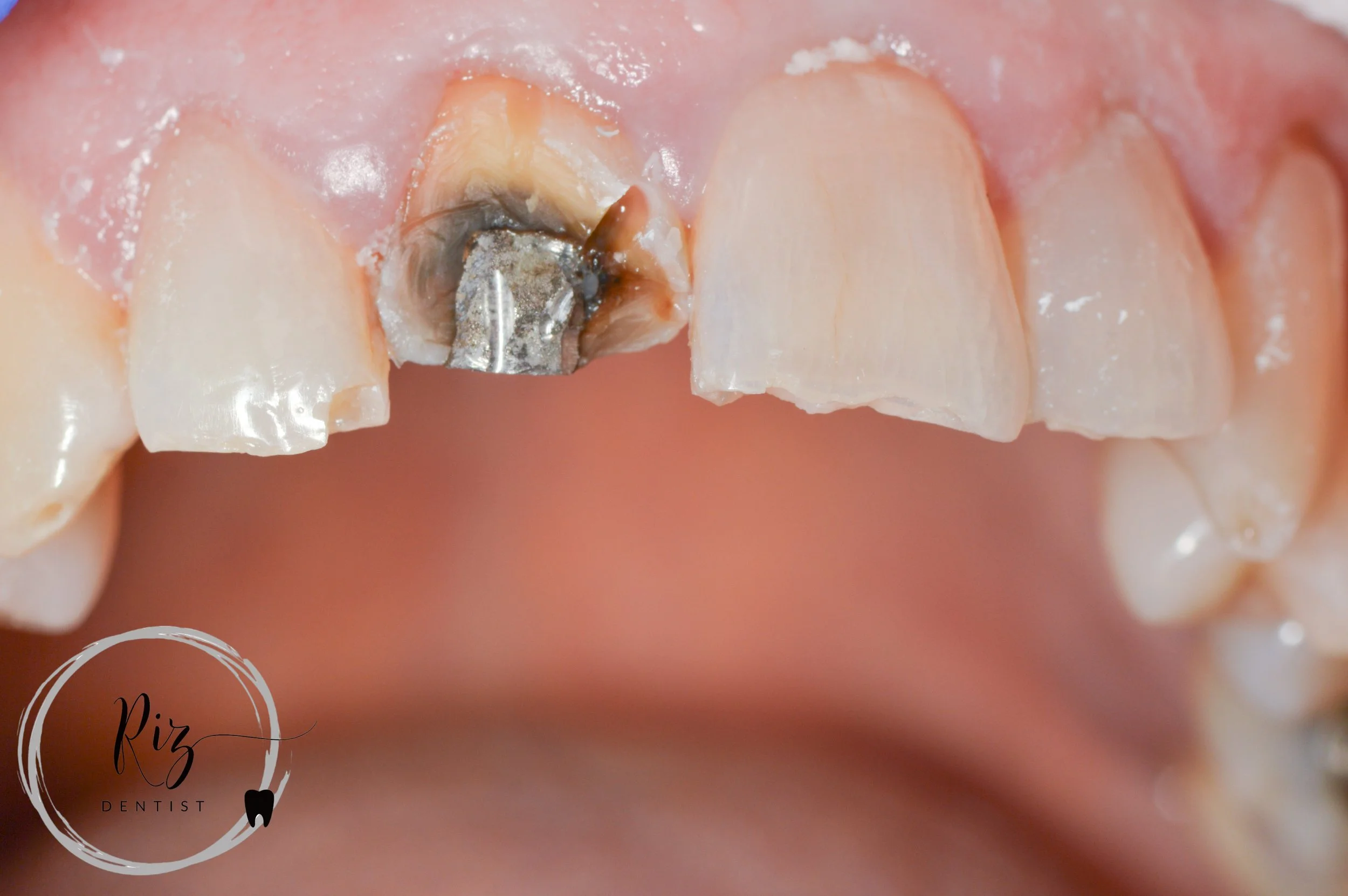Well Worth the Wait!
The patient presented with a fractured front tooth, previously repaired with a white filling at another dental practice.
A mysterious aspect was the presence of silver filling on the upper front tooth.
The tooth was significantly smaller than adjacent teeth, and there was limited space to increase its length.
The tooth lacked the required length for crowning, which typically requires a minimum of 4mm of tooth structure.
Treatment:
To address the issue, a procedure called crown lengthening was performed. This procedure involved ensuring adequate root length and sufficient bone around the root.
Approximately 1-2 mm of gum and bone were removed to lengthen the tooth, making it suitable for a crown.
After the crown lengthening, a waiting period of 6 months was observed to allow the gums to stabilize.
Once the gums had healed and stabilized, impressions were taken for the fabrication of a crown.
Outcome:
For this cooperative patient, a single-tooth crown lengthening procedure was initially performed.
A provisional crown was provided for the 6-month period during which the gums stabilized.
Following this waiting period, a single crown was crafted, and the result was a perfect match.
The patient expressed great satisfaction with the outcome.
This case emphasizes the complexity of addressing a fractured tooth with limited natural structure and the importance of procedures like crown lengthening to create a suitable foundation for restorative work. The patient's cooperation and the extended treatment journey led to a highly satisfactory result.
Lab credits
The patient presented with a fractured front tooth, previously repaired with a white filling at another dental practice.
A mysterious aspect was the presence of silver filling on the upper front tooth.
The tooth was significantly smaller than adjacent teeth, and there was limited space to increase its length.
The tooth lacked the required length for crowning, which typically requires a minimum of 4mm of tooth structure.
Treatment:
To address the issue, a procedure called crown lengthening was performed. This procedure involved ensuring adequate root length and sufficient bone around the root.
Approximately 1-2 mm of gum and bone were removed to lengthen the tooth, making it suitable for a crown.
After the crown lengthening, a waiting period of 6 months was observed to allow the gums to stabilize.
Once the gums had healed and stabilized, impressions were taken for the fabrication of a crown.
Outcome:
For this cooperative patient, a single-tooth crown lengthening procedure was initially performed.
A provisional crown was provided for the 6-month period during which the gums stabilized.
Following this waiting period, a single crown was crafted, and the result was a perfect match.
The patient expressed great satisfaction with the outcome.
This case emphasizes the complexity of addressing a fractured tooth with limited natural structure and the importance of procedures like crown lengthening to create a suitable foundation for restorative work. The patient's cooperation and the extended treatment journey led to a highly satisfactory result.
Lab credits
The patient presented with a fractured front tooth, previously repaired with a white filling at another dental practice.
A mysterious aspect was the presence of silver filling on the upper front tooth.
The tooth was significantly smaller than adjacent teeth, and there was limited space to increase its length.
The tooth lacked the required length for crowning, which typically requires a minimum of 4mm of tooth structure.
Treatment:
To address the issue, a procedure called crown lengthening was performed. This procedure involved ensuring adequate root length and sufficient bone around the root.
Approximately 1-2 mm of gum and bone were removed to lengthen the tooth, making it suitable for a crown.
After the crown lengthening, a waiting period of 6 months was observed to allow the gums to stabilize.
Once the gums had healed and stabilized, impressions were taken for the fabrication of a crown.
Outcome:
For this cooperative patient, a single-tooth crown lengthening procedure was initially performed.
A provisional crown was provided for the 6-month period during which the gums stabilized.
Following this waiting period, a single crown was crafted, and the result was a perfect match.
The patient expressed great satisfaction with the outcome.
This case emphasizes the complexity of addressing a fractured tooth with limited natural structure and the importance of procedures like crown lengthening to create a suitable foundation for restorative work. The patient's cooperation and the extended treatment journey led to a highly satisfactory result.
Lab credits

